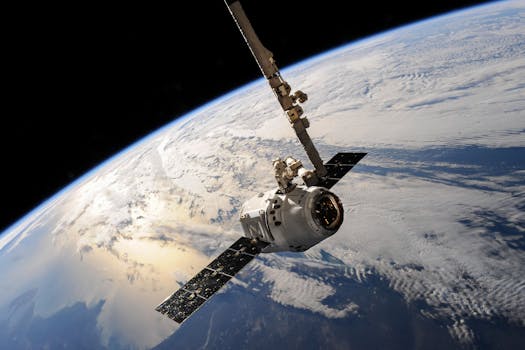The Future of Satellites: Revolutionizing Global Connectivity
The future of satellites is poised to revolutionize global connectivity, enabling faster and more reliable communication networks. With advancements in space technology, satellites are becoming increasingly important for a wide range of applications, from navigation and communication to weather forecasting and Earth observation.

The Future of Satellites: Revolutionizing Global Connectivity
The future of satellites is poised to revolutionize global connectivity, enabling faster and more reliable communication networks. With advancements in space technology, satellites are becoming increasingly important for a wide range of applications, from navigation and communication to weather forecasting and Earth observation. The focus keyword Future of Satellites is a topic of great interest, as it has the potential to transform the way we live and work.
Satellites have been in use for several decades, but recent advancements in technology have made them more powerful, efficient, and cost-effective. The development of small satellites, also known as CubeSats, has made it possible for companies and organizations to launch their own satellites into space, enabling a wide range of new applications and services. For example, companies like SpaceX and OneWeb are launching constellations of small satellites to provide global internet connectivity, while others are using satellites to provide navigation, weather forecasting, and Earth observation services.
Advances in Satellite Technology
One of the key drivers of the future of satellites is the advancement of technology. New materials and designs are being developed, enabling the creation of smaller, lighter, and more powerful satellites. For example, the use of advanced materials like carbon fiber and aluminum is allowing satellites to be built with greater strength and durability, while also reducing their weight and size. This is making it possible to launch more satellites into space, enabling a wider range of applications and services.
Another key area of advancement is in the development of new propulsion systems. Traditional propulsion systems, such as chemical rockets, are being replaced by more efficient and sustainable alternatives, like electric propulsion and advanced ion engines. These new systems are enabling satellites to travel farther and faster, while also reducing their environmental impact. For example, the European Space Agency’s (ESA) Gaia mission is using a advanced ion engine to travel to the Lagrange point, where it is mapping the Milky Way galaxy with unprecedented precision.
Applications of Satellites
Satellites have a wide range of applications, from navigation and communication to weather forecasting and Earth observation. One of the most significant applications is in the provision of global internet connectivity. Companies like SpaceX and OneWeb are launching constellations of small satellites to provide fast and reliable internet access to remote and underserved communities. This has the potential to revolutionize the way we live and work, enabling people to access information, education, and economic opportunities like never before.
Satellites are also being used for navigation, providing location information and timing signals to a wide range of devices, from smartphones to aircraft. The Global Positioning System (GPS) is a network of satellites that provides location information to devices on the ground, enabling applications like navigation, tracking, and mapping. Similarly, satellites are being used for weather forecasting, providing images and data that help us understand and predict weather patterns. For example, the NASA Landsat mission is using satellites to monitor the Earth’s surface, providing valuable insights into climate change, deforestation, and natural disasters.
Challenges and Opportunities
Despite the many opportunities presented by the future of satellites, there are also significant challenges to be addressed. One of the key challenges is the issue of space debris, which poses a significant threat to the safety and sustainability of space missions. As more satellites are launched into space, the risk of collisions and other accidents increases, highlighting the need for more effective debris removal and mitigation strategies.
Another challenge is the issue of regulation and governance, which is critical to ensuring the safe and responsible use of space. The development of new regulations and standards is needed to address issues like spectrum allocation, licensing, and liability, while also promoting international cooperation and collaboration. For example, the International Telecommunication Union (ITU) is working to develop new regulations and standards for the use of satellites, while also promoting international cooperation and collaboration.
In conclusion, the future of satellites is poised to revolutionize global connectivity, enabling faster and more reliable communication networks. With advancements in space technology, satellites are becoming increasingly important for a wide range of applications, from navigation and communication to weather forecasting and Earth observation. While there are challenges to be addressed, the opportunities presented by the future of satellites are significant, and it is likely that we will see significant advancements in the years to come.




